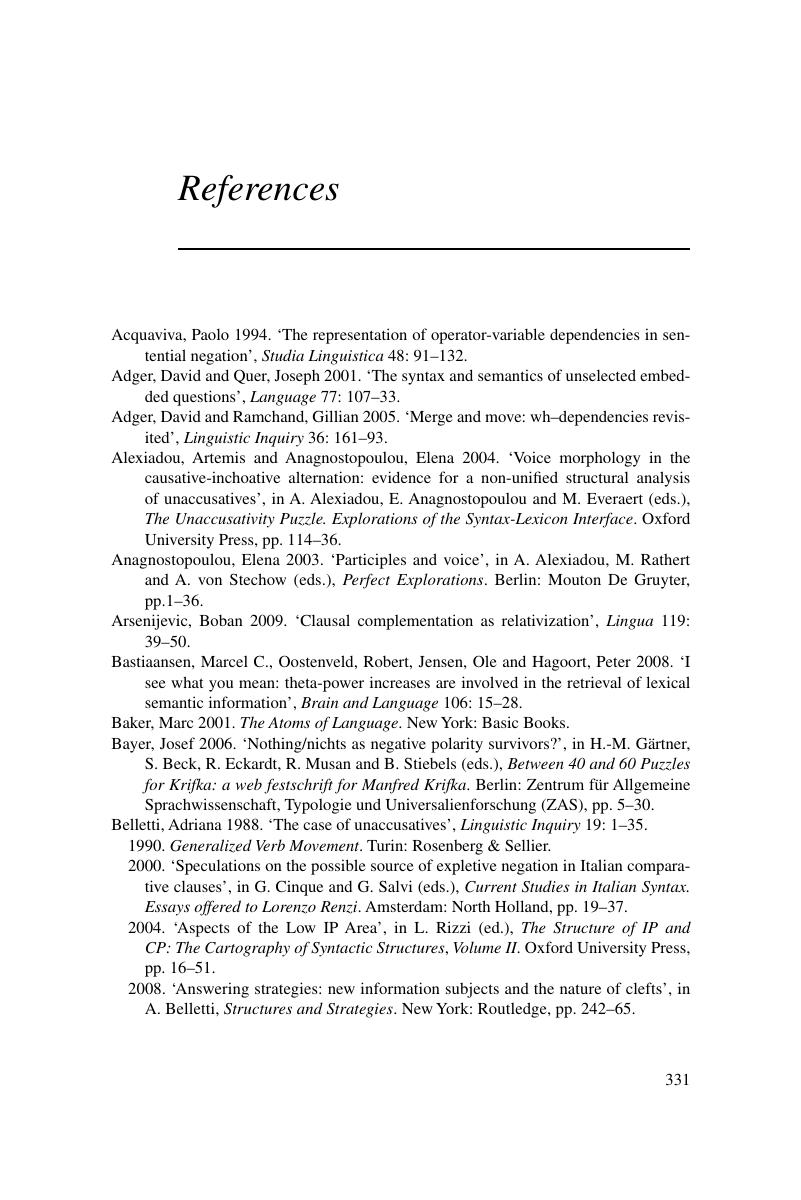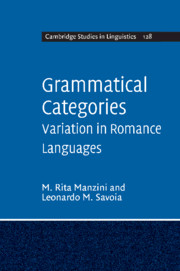Book contents
- Frontmatter
- Contents
- List of tables
- Acknowledgements
- Introduction: grammatical categories and the biolinguistic perspective
- 1 The structure and interpretation of (Romance) complementizers
- 2 Variation in Romance k-complementizer systems
- 3 Sentential negation: adverbs
- 4 Sentential negation: clitics
- 5 The middle-passive voice: evidence from Albanian
- 6 The auxiliary: have/be alternations in the perfect
- 7 The noun (phrase): agreement, case and definiteness in an Albanian variety
- 8 (Definite) denotation and case in Romance: history and variation
- Notes
- References
- Index
- References
References
Published online by Cambridge University Press: 11 April 2011
- Frontmatter
- Contents
- List of tables
- Acknowledgements
- Introduction: grammatical categories and the biolinguistic perspective
- 1 The structure and interpretation of (Romance) complementizers
- 2 Variation in Romance k-complementizer systems
- 3 Sentential negation: adverbs
- 4 Sentential negation: clitics
- 5 The middle-passive voice: evidence from Albanian
- 6 The auxiliary: have/be alternations in the perfect
- 7 The noun (phrase): agreement, case and definiteness in an Albanian variety
- 8 (Definite) denotation and case in Romance: history and variation
- Notes
- References
- Index
- References
Summary

- Type
- Chapter
- Information
- Grammatical CategoriesVariation in Romance Languages, pp. 331 - 344Publisher: Cambridge University PressPrint publication year: 2011



